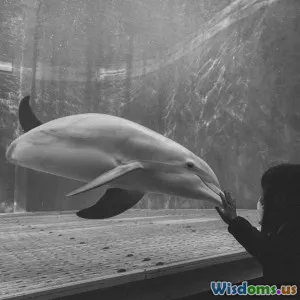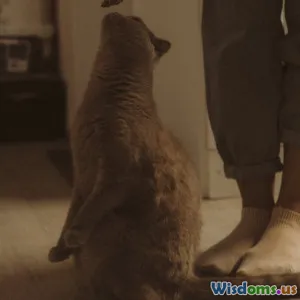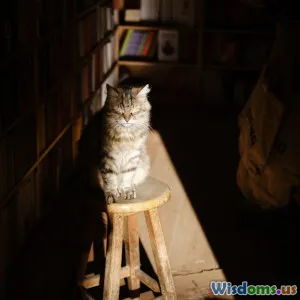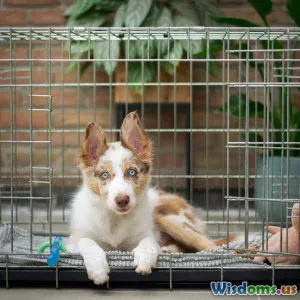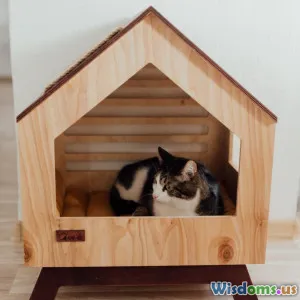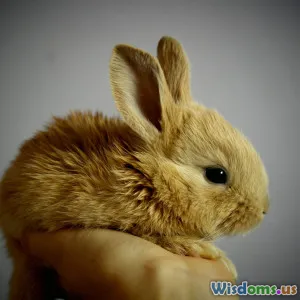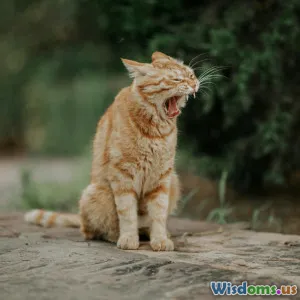
Is Your Cat Bored? Recognizing Signs and Solutions
7 min read Discover how to recognize signs of boredom in your cat and effective solutions to keep them happy and stimulated. (0 Reviews)
Is Your Cat Bored? Recognizing Signs and Solutions
Cats are renowned for their independent nature, mysterious habits, and occasionally aloof demeanor. But beneath that inscrutable exterior lies a creature whose mental and physical well-being depend heavily on adequate stimulation and engagement. Many cat owners mistakenly believe that cats are self-sufficient and content with minimal interaction, but boredom is a real and often overlooked problem that can affect feline health and behavior.
Why Does Cat Boredom Matter?
The mental health of cats is just as important as their physical health. Boredom in cats can result in increased stress, anxiety, and development of behavioral issues. According to Dr. Liz Bales, a veterinary behaviorist, "Cats are mentally stimulated when they’re hunting, exploring, or playing. Without these activities, they can become frustrated or depressed."
Bored cats may exhibit behaviors such as destructive scratching beyond their posts, excessive grooming leading to bald spots, or nocturnal hyperactivity disrupting your sleep. These symptoms impact not only the cat but also the harmony within the household.
Recognizing Signs of Boredom in Cats
Identifying boredom is the first step toward improving your cat’s quality of life. Here are some key signs:
1. Increased Destructive Behavior
If your cat is clawing at furniture or knocking things off shelves more than usual, it could be a sign of pent-up energy and frustration.
2. Excessive Grooming
Cats sometimes groom themselves to relieve stress. While grooming is healthy, overdoing it may cause fur loss or skin irritation.
3. Lethargy or Depression
A bored cat might become unusually inactive, losing interest in play or common activities.
4. Attention-Seeking or Vocalization
If your cat frequently demands your attention through persistent meowing or pawing, boredom might be the culprit.
5. Pacing or Restlessness
Some cats pace or seem restless as a way of coping with boredom.
A 2017 study published in Applied Animal Behaviour Science found that cats in multi-cat households with limited enrichment displayed more anxiety-related behaviors, demonstrating the influence of environment on feline well-being.
Causes of Boredom in Cats
Why do cats become bored? Understanding the causes helps in designing effective enrichment.
- Lack of Environmental Enrichment: A sparse or static environment with no new toys, scratching posts, or climbing areas can quickly bore a cat.
- Insufficient Playtime: Cats are natural hunters, requiring daily interactive play that mimics hunting.
- Isolation: Some cats craving social engagement may suffer when left alone for long periods.
- Monotony: Routine and unchanged surroundings can dull a cat’s curiosity.
Effective Solutions to Combat Cat Boredom
1. Create an Enriching Environment
Cats thrive in stimulating settings. Include cat trees, window perches, scratching posts, and cozy hiding spots to appeal to their natural instincts. Rearranging furniture occasionally or adding new items can renew interest.
2. Invest in Interactive Toys
Puzzle feeders, laser pointers, and toys that move unpredictably encourage physical activity and cognitive engagement. For example, the "Catit Senses 2.0" interactive toy has been praised by users for sustaining their cats’ interest over weeks.
3. Schedule Regular Play Sessions
Daily interactive play for at least 15 minutes helps simulate hunting behavior and burns off energy. Using wand toys or feather teasers encourages movement and agility.
4. Provide Social Interaction
If your lifestyle permits, adopting a second cat can offer companionship and mental stimulation. Ensure gradual introduction to reduce territorial stress.
5. Use Food-Based Enrichment
Food puzzles or scatter feeding stimulates natural foraging behaviors. This approach can slow down fast eaters and provide mental challenges.
6. Explore Outdoor Experiences Safely
Training your cat to walk on a harness or building a catio (cat patio) allows safe exploration outside, increasing sensory input and satisfaction.
Real-World Example: Success with Enrichment
Dr. Sarah Ellis, a feline behavior consultant in London, shared in an interview:
"One family noticed their indoor cat was scratching furniture and meowing excessively. After introducing puzzle feeders and daily playtime routines, the cat’s behavior improved dramatically within weeks. Providing views of outdoor birds from a window perch also helped engage its hunting instincts."
Conclusion
Boredom in cats is a silent but impactful problem that can deteriorate their quality of life. Recognizing the subtle and overt signs empowers owners to take decisive actions. By fostering a stimulating environment, engaging in interactive play, and catering to their natural behaviors, you can transform your cat’s world from mundane to thrilling. Your cat’s curiosity and contentment will not only enhance their happiness but also deepen the bond you share.
After all, a bored cat is often a lonely cat — take the steps today to awaken their innate playful spirit and maintain a healthy, fulfilled feline companion.
References:
- Bales, L. (2020). Understanding and Managing Cat Behavior. Journal of Veterinary Behavior.
- Ellis, S. Interview on Feline Enrichment Strategies, 2023.
- Applied Animal Behaviour Science (2017). Effects of Multi-Cat Households on Feline Anxiety.
Rate the Post
User Reviews
Popular Posts










